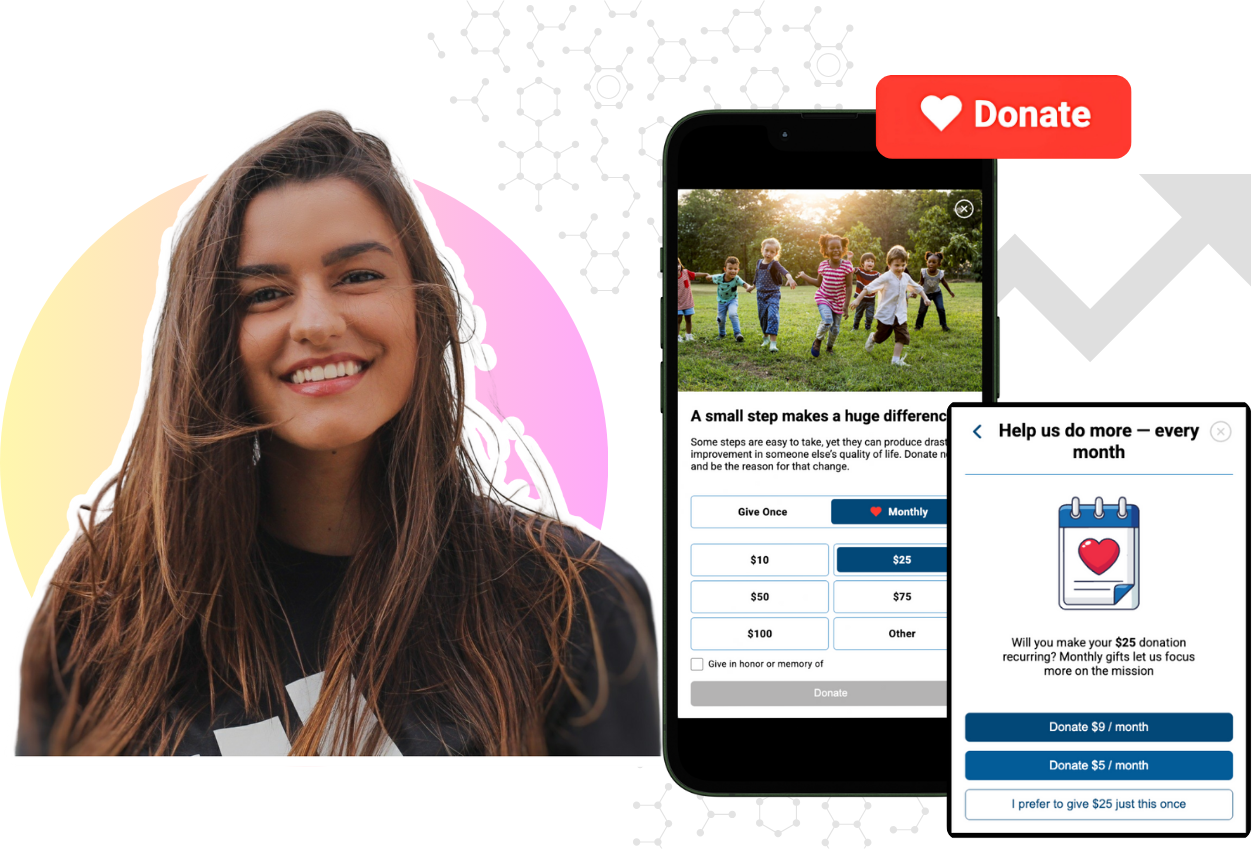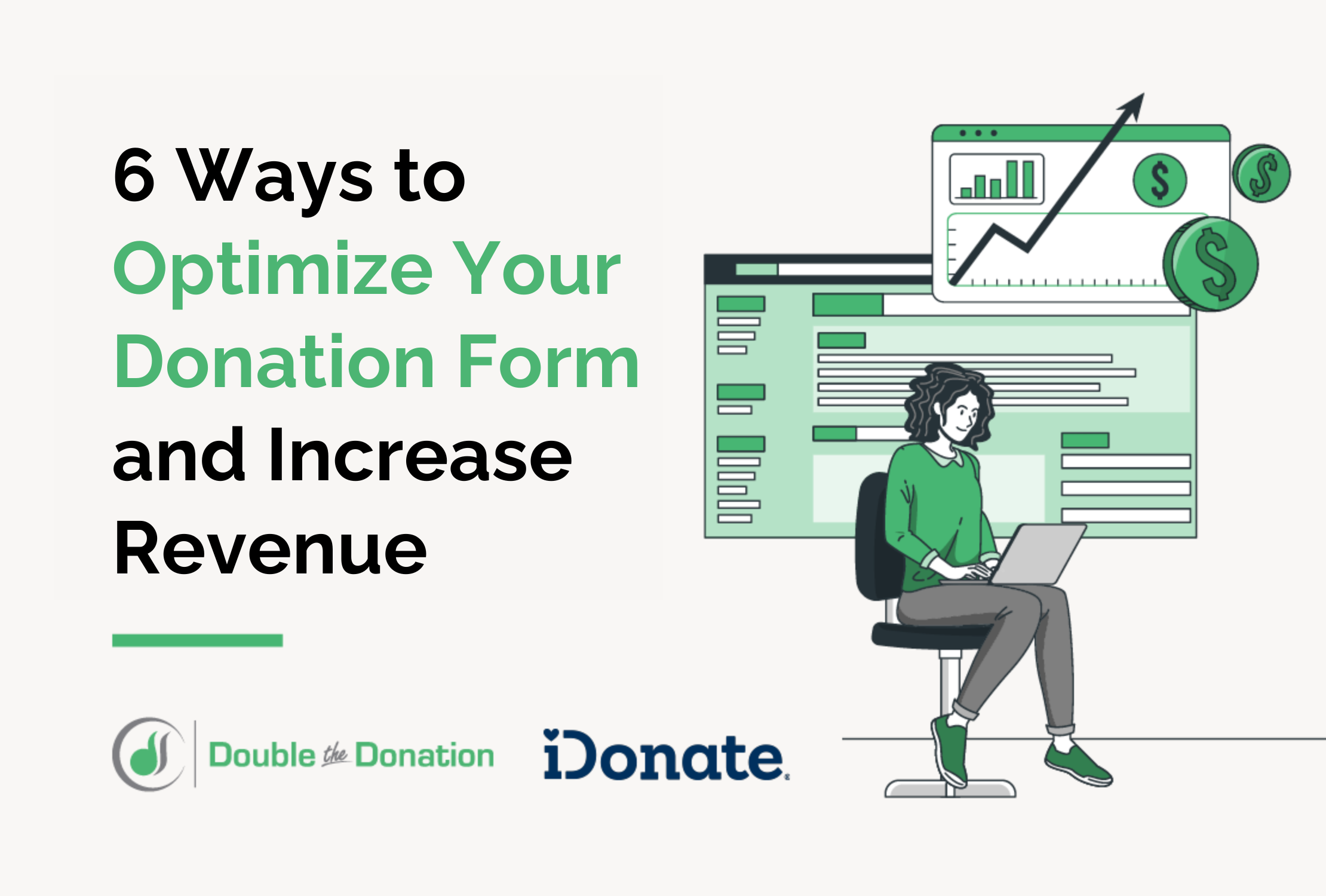6 Ways to Optimize Your Donation Form and Increase Revenue
In the continuously growing trend toward digital fundraising, an organization’s donation form is its most invaluable resource. However, not all...

Mobile-First Pop-Up Donation Form
Launch mobile-first pop-up forms in minutes, use built-in tools to capture more donations, and optimize the giving experience—no dev team required.
New to online donation pages for your nonprofit? Start here.
Donation page A/B testing - no science degree needed.
Keep your donation page loading fast - and drive higher conversions.

The 4 Types of Online Donation Experiences
89% of donors leave without giving. Learn how to use the right donation form to close the gap and boost conversions.

There’s at least one thing we know for sure about the human brain. Our reactions and choices are heavily influenced by our basic needs for food, water, sleep, and shelter. Another big influence is rooted in our reward system. It’s been scientifically proven that virtually any object, event, or activity that invokes a pleasurable feeling can act as a motivator, thanks to the neurotransmitter dopamine.
This “reward system” is at work throughout the day, directly or indirectly influencing our decisions. It’s that same principle that leaves donors feeling rewarded by the knowledge that their gift is having a real impact on the cause to which they’re contributing. Simply put, it feels good to do good, which is why it’s surprising to see nonprofits overlook this basic human characteristic when it comes to motivating repeat donations.
Donors feel a strong connection to the particular causes they support. Their financial contributions are an outward indicator of inner gratification. There’s a real neurobiological payoff. Converting a first-time donor into a sustainable, recurring donor – or closing the loop – has a lot to do with regular, ongoing, targeted messages, in a consistent tone with an immediately recognizable look and feel in each interaction. But most important of all is showing them the actual results their support is helping to produce.
Much of this, in other words, comes down to cultivating the donor experience.
Closing the loop is impossible to achieve without a rich donor experience, and it commences from the moment a donor is acquired -that’s when the door to the donor lifecycle is opened. Yet, too often, NPOs focus purely on getting donor dollars. Capturing a contribution from a newly acquired donor becomes the main focus and the final step.
With this short-term thinking strategy, NPOs fail to do a good job of telling the full story, not just about the problem needing to be solved, but about how the donation dollars received are being put to work to solve that problem.
Consistent, relevant communications tied directly to showcasing the real-world results of a donor’s contributions will activate the advocate in every donor.
A significant amount of time, money, and resources are invested in developing the operational systems and processes used to execute the fundraising function. But adhering to a purely functional and operational view of fundraising stifles the personalized, results-focused communications that go hand-in-hand with an effective donor experience.
Anything that reinforces a donor’s experience as a personally invested stakeholder — a process that I refer to as “donor-raising” — will activate the “good feeling” that our brains reward us with under these circumstances.
In the course of doing so, a motivated donor emerges. Invoking the reward-response in donors is imperative for nonprofits that want to close the loop and ensure long-term sustainability.
Our Digital Fundraising Platform (DFP) paves the way to a donor journey that leaves donors feeling intrinsically gratified, aligns with what they care about, and strengthens ties with donors. Visit our website and talk to our team today at the link below to learn more.

In the continuously growing trend toward digital fundraising, an organization’s donation form is its most invaluable resource. However, not all...

You may have heard a famous quote that says, “Failing to plan is planning to fail.” In layman’s terms, if you don’t have a plan, your chances of...

While it may not be “news,” recent data on giving in America paints a troubling and persistent trend. Reports show that fewer than half of American...